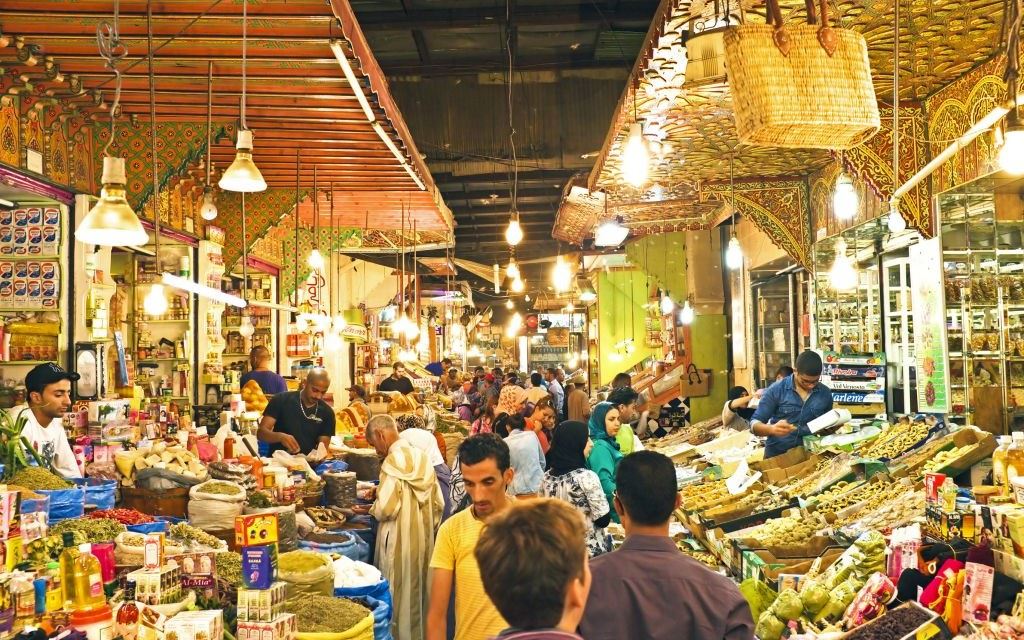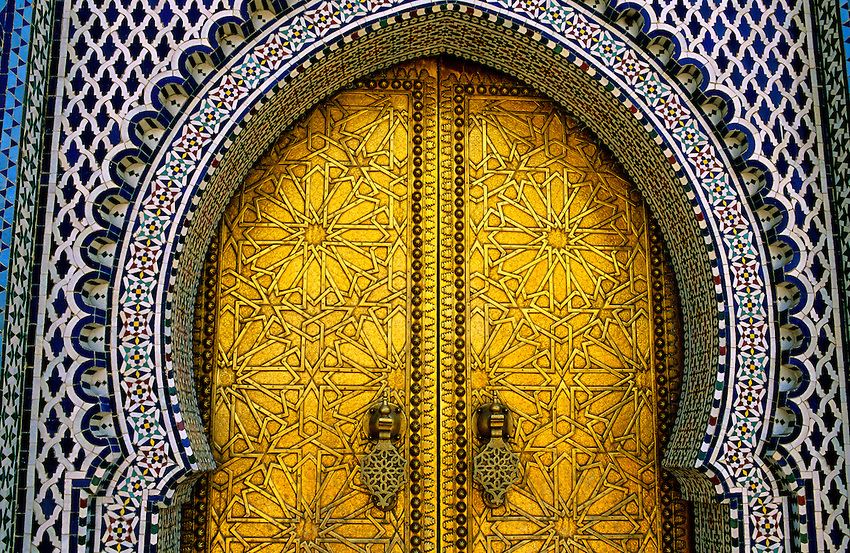Fès/Fez
.jpg)
Founded in 789 CE by the son of Morocco’s founder and long a celebrated haven for artists and scholars, the city of Fès today bursts with bustling cafés, outdoor markets, narrow streets, workshops, and donkeys carting the city’s goods. Long known as the “Athens of Africa” and the “Mecca of the West,” Fès is celebrated both for its history and for its role as Morocco’s preeminent spiritual and intellectual center. The oldest walled part of the city, Fès el-Bali or “Old Fès” (also known as the medina), built in the eighth century and named a UNESCO World Heritage Site in 1981, forms the largest car-free urban area in the world, a fascinating warren of alleyways and mud-brick corridors. Enter through the Bab Boujeloud (Blue Gate) or any one of thirteen other gates, and wander through the alleys of Old Fès, crammed with artisan workshops, food stalls, bathhouses, water fountains, and mosques. Stroll slowly down the Talaa Kebeera, the largest “street” in the Old Town, running from the Blue Gate through much of the old quarter.

Visit the two medersa (Islamic schools), Medersa Bou Inania and Medersa el-Attarine, to savor the beautiful Islamic architecture. Built between 1351 and 1357, the Medersa Bou Inania has been impressively restored, and boasts its own mosque with a beautifully green-tiled minaret. Slightly smaller is the Medersa el-Attarine, founded in 1325 and also carefully restored. Explore the Henna Souq, one of the Old Town’s oldest markets, its many stalls shaded by enormous plane trees. One of Africa’s largest mosques stands in the Kairaouine quarter, along with what may be the world’s oldest university. The entire complex was established in 859 by a woman refugee from Tunisia, and expanded by the Almoravids in the twelfth century. Although non-Muslims may not enter the mosque, the university’s library opened to the public in 2016.
.jpg)
In the residential quarter of the Old Town stands the Palais Glaoui, a crumbling yet magnificent eighteenth-century palace built by a pasha from Marrakech in the Andalusian style. Facing the palace is the Nejjarine Museum of Wooden Arts and Crafts, housed in a beautifully restored fondouq or rooming house for traveling merchants, and featuring traditional craftsmen’s tools, musical instruments, prayer beads, and chests. If arts and crafts pique your interest, be sure to visit the city’s iconic Chaouwara tanneries, offering a unique view of the processes of producing world-class leather that have changed little through the centuries. You won’t need a map—just follow the pungent smells! The tanneries were extensively renovated in 2015-2016, but retain their antique charm. Ceramics are also everywhere in Fès, from the distinctive blue pottery to the intricate mosaics decorating fountains, walls, and minarets.

If the dusty bustle of the Fès Old Town tires you out, visit the lush Jnan Sbil or Boujeloud Gardens, laid out more than a century ago and renovated extensively in recent years. There are large central fountains, a lake filled with birds, and many leafy paths to provide cool relief from the sun. At dusk, enjoy the musical concerts and story-telling sessions with the locals. Near the Old Town stands the Palais Royale, stunningly restored and with beautiful grounds but unfortunately not open to the public. Visitors may view the imposing brass doors, surrounded by fine tile mosaics and carved cedar. Nearby the palace is the mellah or old Jewish quarter, founded in the fourteenth century as a refuge and, at its height, boasting a population of nearly 250,000 residents. Only seventy or so remain in Fès, yet their distinctive houses with open balconies can still be visited. The Rue des Mérinides lined with houses adorned with wooden and wrought-iron balconies, as well as stucco work, is architecturally impressive. In earlier centuries, Jewish women sat on these upper balconies, watching the world and hoping for a cool breeze. The seventeenth-century Ibn Danan Synagogue, restored by UNESCO in 1999, hosts original Torah scrolls made of gazelle skin.

